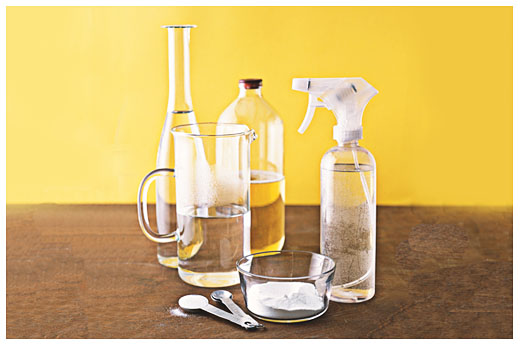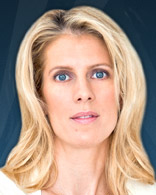Green Cleaning Myths

by guest blogger Deirdre Imus, author and environmental health advocate
When a product becomes trendy or particularly appealing to consumers, manufacturers respond.
It’s why over the past few years you’ve probably noticed a proliferation of “all-natural” this, “organic” that, and “green” as far as the eye can see, whether on food packaging, cleaning product labels, clothing, or furniture.
It can be difficult—almost impossible—for the average person to make sense of it all, and to decipher what’s good, what’s bad, and what’s truly awful. After all, the terms “all-natural” and “organic” can easily refer to substances that are indeed both natural and organic—and also bad for your health.
Cleaning-product manufacturers are not required by federal law to disclose ingredients on their labels or websites, so the only way for consumers to discover what’s truly inside is to read each product’s material safety data sheet (MSDS), a federally mandated listing of ingredients provided so that workers are aware of chemical hazards in cleaning products used on the job.
It is practically pointless, however, for anyone without a working knowledge of the cleaning-products industry to read an MSDS, because the sheets are chock-full of long, complicated ingredient names that give no indication of whether a product is safe or not. You may know that ammonia is dangerous, but can you identify—or even pronounce—an ingredient called 2-butoxyethanol? But it’s in some products that are touted as “green.”
Actually, 2-butoxyethanol is a solvent that can cause eye irritation and damage red blood cells, according to the Environmental Working Group (EWG), one of the nation’s leading environmental health research and advocacy groups.
Such misleading nomenclature is exactly why we need a more concise, easily accessible system to help consumers make informed decisions about which cleaning products to buy and which to avoid like the plague.
Currently, you can locate healthy products by searching databases like the EWG Guide to Healthy Cleaning, or checking to see if your favorite product is recognized by the U.S. Environmental Protection Agency’s Design for the Environment Program. These can be helpful, but this step is not entirely effective: Each database, listing, or guide uses different criteria to meet its unique set of standards for green validation.
Which leads me to this: How can you find the best, healthiest, and safest cleaning products to use in your home?
Here are some helpful hints about what to look for, regardless of a product’s name, labeling, or database rating:
- All ingredients should be fully disclosed
- Ingredients should be derived from plants and minerals
- Product must not contain petroleum-derived or petrochemical ingredients
- Label must stipulate the origin of fragrance and whether or not it is naturally derived
- All ingredients should be biodegradable
- Product should involve no animal testing and contain no animal-derived ingredients
- Finished product must be safe for septic tanks and gray water
- Product must not be corrosive
- Product must not contain compounds that cause or contribute to the creation of greenhouse gases or ozone depletion
- Product must be free of any known human carcinogens, mutagens, teratogens, and endocrine disruptors.
 Deirdre Imus, founder of the site devoted to environmental health, dienviro.org,
is president and founder of The Deirdre Imus Environmental Health
Center at Hackensack University Medical Center and cofounder/co-director
of the Imus Cattle Ranch for Kids with Cancer. She is a New York Times best-selling author and a frequent contributor to FoxNewsHealth.com and Fox Business
Deirdre Imus, founder of the site devoted to environmental health, dienviro.org,
is president and founder of The Deirdre Imus Environmental Health
Center at Hackensack University Medical Center and cofounder/co-director
of the Imus Cattle Ranch for Kids with Cancer. She is a New York Times best-selling author and a frequent contributor to FoxNewsHealth.com and Fox Business Bridget's Note: As a consumer of Melaleuca products only, so far this is the ONLY company I have found that has all natural safe effective cleaning products and non-toxic laundry detergents. My son was SO allergic to the "Free & Clear" soaps, until I discovered it only meant it was free of scent and clear of dyes. It still contains carcinogens and irritants (like tiny bits of fiberglass used in almost all commercial laundry soaps to agitate and "clean" therefore resulting in itchy dry skin and "pilling" of clothing. My advice: Find a safe brand and stick to it!
~Bridget
No comments:
Post a Comment